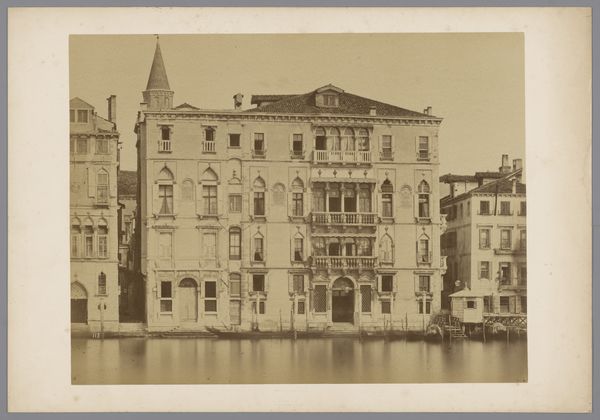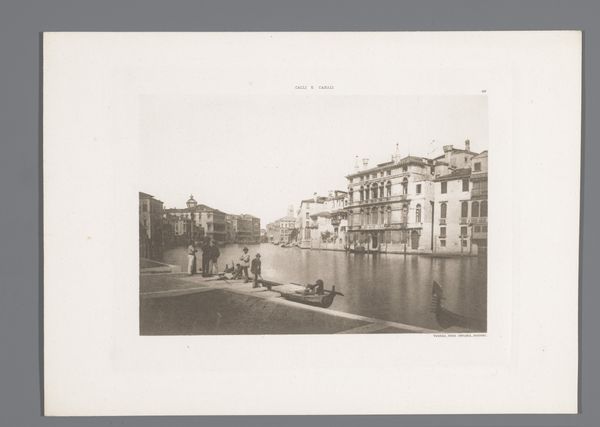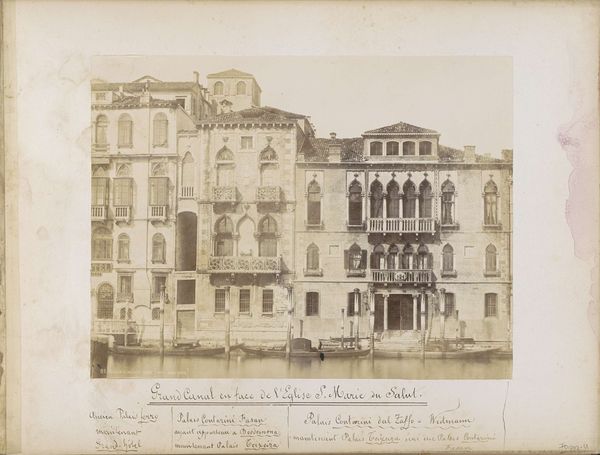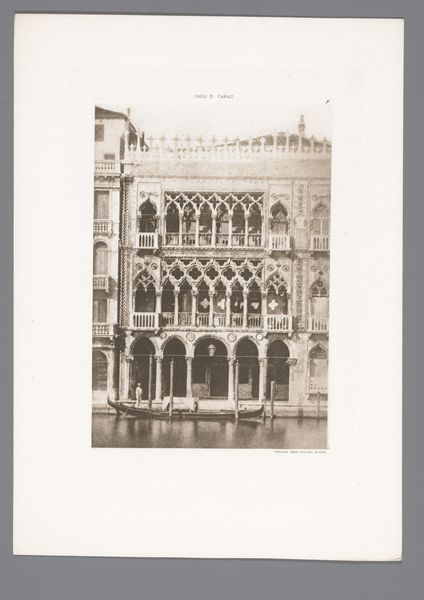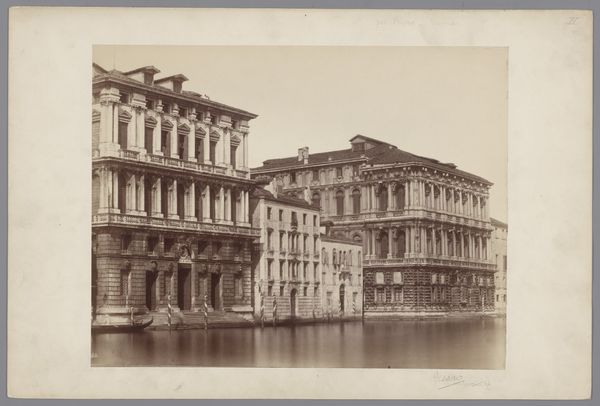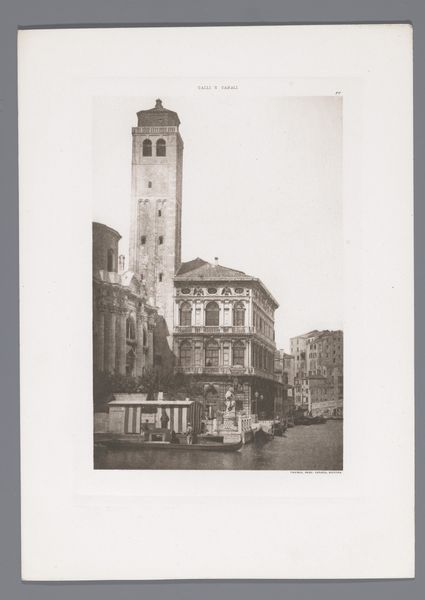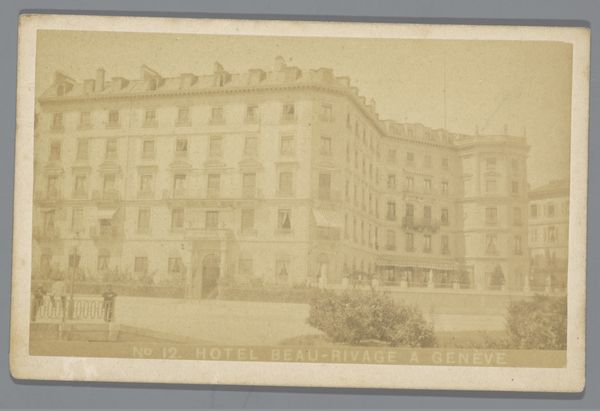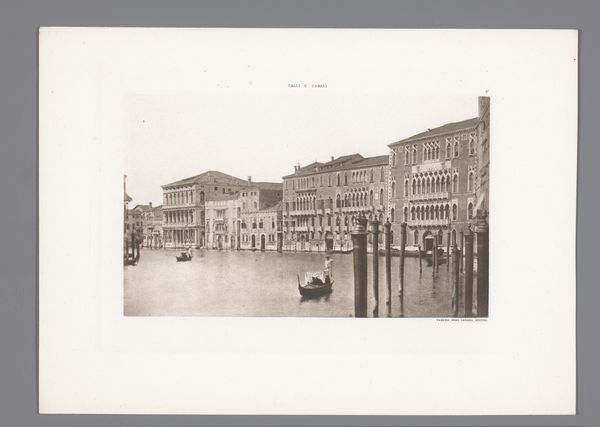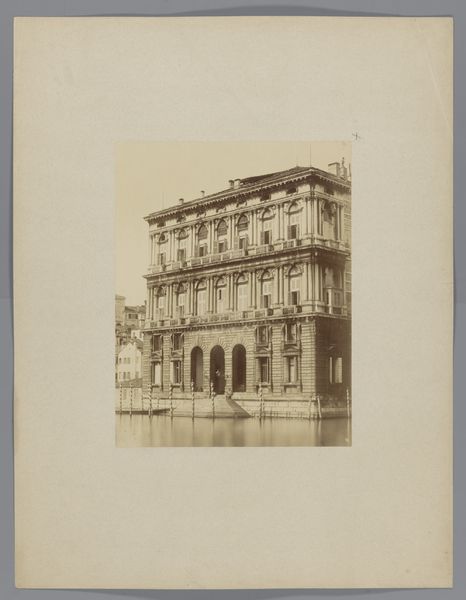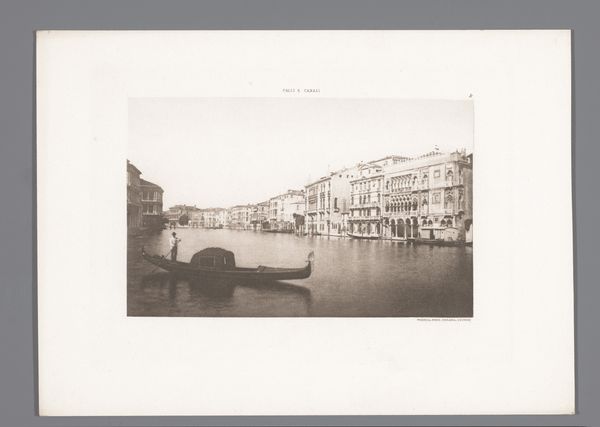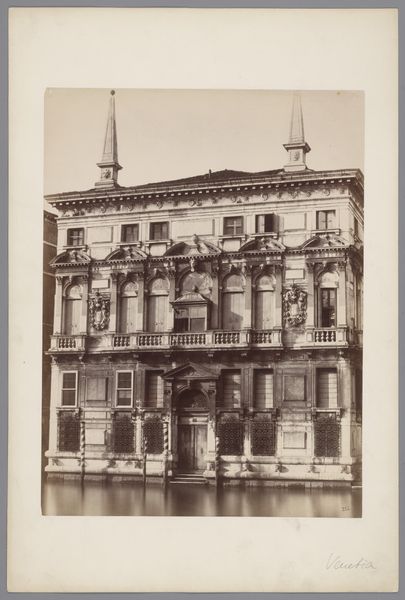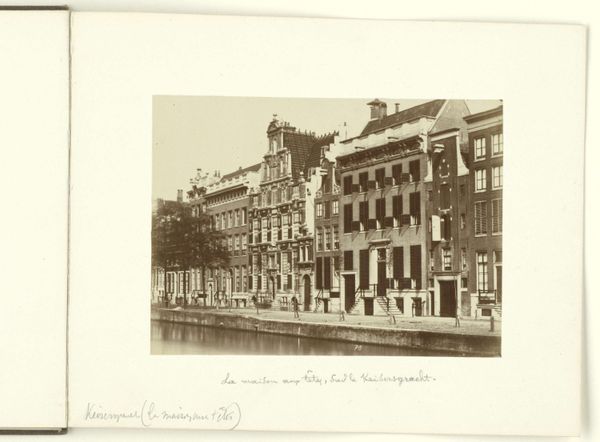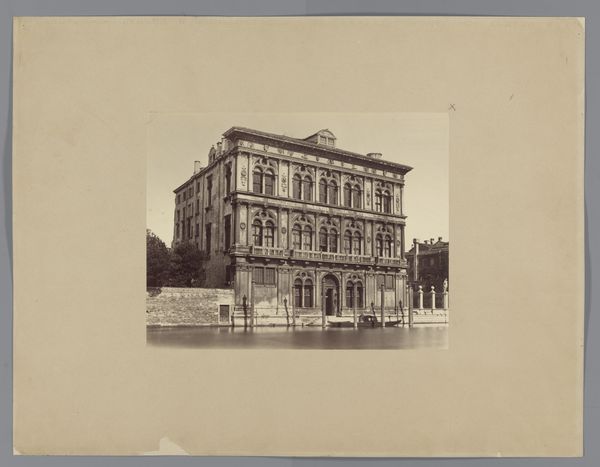
Dimensions: height 125 mm, width 180 mm
Copyright: Rijks Museum: Open Domain
Editor: This print, capturing the "View of Palazzo Ferro and Palazzo Fini in Venice," dates to before 1898. The photograph's sepia tones give the scene a dreamlike quality, yet the architectural details remain crisp and defined. What sociopolitical factors would have led to the creation of this work? Curator: That’s a perceptive reading. We can't separate this cityscape from Venice's complex history as a maritime power and its subsequent decline, or from the gaze of the colonizer. The photograph, in its serene depiction of Venetian palazzi, arguably romanticizes a power structure rooted in trade and exploitation. How might the absence of human figures contribute to this sense of romanticization, silencing perhaps the labor and the lives that sustained this wealth? Editor: That's fascinating. So, by not showing the everyday lives of Venetians, the photograph risks presenting a sanitized version of history, prioritizing aesthetics over the lived experience of the working class. Is it perhaps acting as propaganda? Curator: It's a strong word, but not unfounded. Consider, too, the gendered aspect. Venice, throughout history, has often been portrayed as feminine—vulnerable yet alluring. Does this photographic perspective, by focusing on the grand facades and still waters, perpetuate that tradition and further erase the experiences of those not in positions of power, namely the non-elites and the non-male? How much are our assumptions based on our modern sensibility? Editor: I see what you mean. Viewing it this way makes me question the role of landscape photography and its power to shape narratives about wealth and cultural memory, not just aesthetic value. I am reminded that how an image is constructed impacts not just how people are depicted but if they are depicted at all! Curator: Exactly! And questioning those choices allows us to move toward a more just and critical reading of history, recognizing whose stories are centered and whose are marginalized, now and then. The photo isn’t just about the buildings. It reflects systems.
Comments
No comments
Be the first to comment and join the conversation on the ultimate creative platform.

